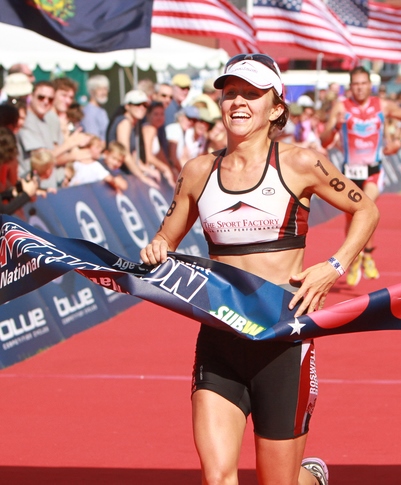Triathlon Pacing and Avoiding the Placement Pitfall
Posted by Matt Russ on 8th Apr 2016
by Coach Matt Russ
 No athlete enjoys being passed in a race. When you sense you are falling
behind the natural reaction is speed up; attempting to keep pace or chase
the person now in front of you. But by doing so you just got pulled off of your strategy and put into someone else's. Your pacing plan is now unknown and relies on the
person you are following. Triathlon pacing is more complex than most endurance
sports in that you must consider your individual strengths/weaknesses of three
sports. You may in fact be chasing down an athlete that has no relevance to
your own placement, expending too much energy for little gain. Non-draft
triathlons are essentially time trials and by racing the clock vs. other
athletes you will meter out your energy much more effectively.
No athlete enjoys being passed in a race. When you sense you are falling
behind the natural reaction is speed up; attempting to keep pace or chase
the person now in front of you. But by doing so you just got pulled off of your strategy and put into someone else's. Your pacing plan is now unknown and relies on the
person you are following. Triathlon pacing is more complex than most endurance
sports in that you must consider your individual strengths/weaknesses of three
sports. You may in fact be chasing down an athlete that has no relevance to
your own placement, expending too much energy for little gain. Non-draft
triathlons are essentially time trials and by racing the clock vs. other
athletes you will meter out your energy much more effectively.
A sound pacing strategy relies on you racing within your limits, not another's. There is only one most efficient pace from start to finish and a very fine line between being under and over-pacing. The longer the race is the more pacing becomes essential, especially in ultra distance racing. It is very easy to get over stimulated or caught up in the moment, pushing too hard at the wrong time and paying for it later.
Going completely anaerobic creates oxygen debt and debts must be paid back. Even if this anaerobic effort is short you must slow down to recover and re-oxygenate your body, and this requires time. Anaerobic efforts are very fatiguing, especially if you are not trained to support these intensities, or to repeat efforts at them. They cause a shift in metabolism away from fat burning, taping into much more limited glycogen stores. It is important to determine and race your individual performance envelope and to pace (and train) accordingly. Field or clinical tests are a great place to start. Determining your lactate threshold heart rate, aerobic/anaerobic thresholds, or peak VO2 heart rate gives you a reference points or a “redline” to help establish pacing guidelines. It is important to note that where you should pace yourself in relation to these numbers will depend on your conditioning not just the numbers. A sprint races may have you at or above LTHR if you are highly trained or below if you calculate your time to be well over an hour. Short course race simulations are great work outs for estimating where your thresholds and abilities lie. Longer or ultra endurance races will be paced at aerobic levels and the focus should shift to energy conservation vs. expenditure.
Once you established your pacing parameters it is crucial to stay within them; this requires discipline and focus. Race data is some of the most useful as stimulus and intensity are always a bit higher on race day than in training. It is important to review your post race data and adjust your pacing strategy accordingly. There are a variety of technologies available that not only collect race data, but also allow you to review it graphically and store it for comparison. A basic method of pacing is checking mile splits or using speed on the bike. However both these methods create a stochastic energy output over varied terrain, and in the case of mile splits a reactive vs. proactive pacing strategy. Real time metrics such as heart rate, or power (watts), or GPS (pace) are preferable. It should be habit to regularly scan your device and make adjustments according to plan.
Race placement predictions are not good objectives as you have no control over who shows up on race day; only your own performance. Athletes can become frustrated or discouraged by a placement even if their fitness or speed improved. Focus on objectives that are within your control such as a new course PR or improved swim split and let the chips fall where they may placement wise.
When a sound pacing strategy is implemented racing becomes a well rehearsed, almost automatic process. Putting the focus on individual improvement and progress will also lower your level of anxiety and help you focus on what is within your control. The most successful athletes are the ones that know exactly what they have to do; and execute their strategy well to accomplish it.
Matt Russ has coached and trained athletes up to the professional level, domestically and internationally, for over 20 years. He currently holds the highest level of licensing by both USA Triathlon and USA Cycling, and is a licensed USA Track and Field Coach. Matt is Head Coach and owner of The Sport Factory, and coaches athletes of all levels full time. He is also free lance author and his articles are regularly featured in a variety of magazines and websites. Visit www.sportfactory.com for more information or email him at coachmatt@sportfactory.com


